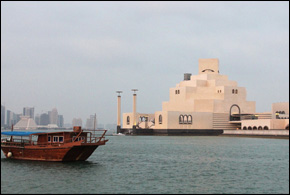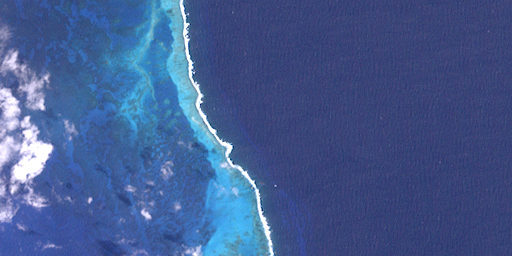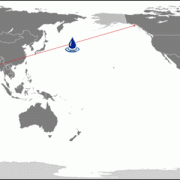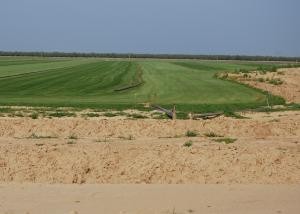Japan Considers Wastewater-for-Gas Trade with Qatar
The wastewater would be used as ballast for returning tankers.
Japan’s Ministry of Economy, Trade and Industry will begin negotiations with the Qatari government in the coming weeks to trade wastewater for oil and natural gas, the Oil and Gas Journal reports.
The wastewater would be loaded into the empty ballast tanks of liquefied natural gas (LNG) tanker ships for their return voyage to Qatar. Japan is the world’s biggest importer of LNG—gas that has been cooled to a liquid state to facilitate tanker transport—and Qatar is the world’s biggest producer.
The deal would be the first transaction of its kind to take place in global markets.
“I can see them doing it,” said John Anderson of CWE, Inc. a New Jersey-based company involved in bulk water consulting and logistics.
“It makes sense,” Anderson added in an interview with Circle of Blue. “It’s a matter of the two groups putting their heads together and making it work.”
Neither Japan’s Ministry of Economy, Trade and Industry nor Qatar’s Ministry of Business and Trade responded to a request for more details about the proposal.
As it stands now, ships returning to Qatar from Japan use seawater as ballast, which is necessary to stabilize the empty tanker. Owing to the spread of aquatic invasive species, marine regulations have become more strict in recent years regarding the discharge of ballast water.
In 2004, an international Ballast Water Management Convention was adopted, but it still needs four more ratifications before it comes into force.
As a regional response, Persian Gulf countries adopted their own set of rules in November 2009. Tankers entering the gulf must discharge their ballast water and replace it with local water, treat the transported ballast water on board, or deliver it to an on-shore treatment plant.
Onboard treatment systems are uncommon, wrote Graham Greensmith, a specialist at Lloyd’s Register, in an email to Circle of Blue. Most tankers entering the Persian Gulf choose to exchange their ballast for local water.
Because of these requirements, more innovative uses applications for ballast are being sought.
In a trial run last summer, Japan tried exporting fresh water to Qatar, but it was too expensive at $1.05 to $1.98 per cubic meter, according to the Oil and Gas Journal.
The wastewater will most likely be treated on board the tanker using ClearBallast—a water purification system newly introduced by Hitachi, OGJ reports.
Despite being one of the most water scarce countries in the world, Qatar’s per capita water consumption is among the highest. An aquifer in northern Qatar supplies water for agriculture, but all of the country’s drinking water is desalinated. The country’s five existing desalination plants have a capacity of 987,000 cubic meters per day, while two plants are currently under construction that will increase capacity by 50 percent.
Still, the amount of water that could be transported would only be one to two percent of Qatar’s total annual consumption, said Damien Feger, vice president of Paris-based New Generation Natural Gas, at a natural gas conference last year.
Source: Oil and Gas Journal
Brett writes about agriculture, energy, infrastructure, and the politics and economics of water in the United States. He also writes the Federal Water Tap, Circle of Blue’s weekly digest of U.S. government water news. He is the winner of two Society of Environmental Journalists reporting awards, one of the top honors in American environmental journalism: first place for explanatory reporting for a series on septic system pollution in the United States(2016) and third place for beat reporting in a small market (2014). He received the Sierra Club’s Distinguished Service Award in 2018. Brett lives in Seattle, where he hikes the mountains and bakes pies. Contact Brett Walton












Leave a Reply
Want to join the discussion?Feel free to contribute!